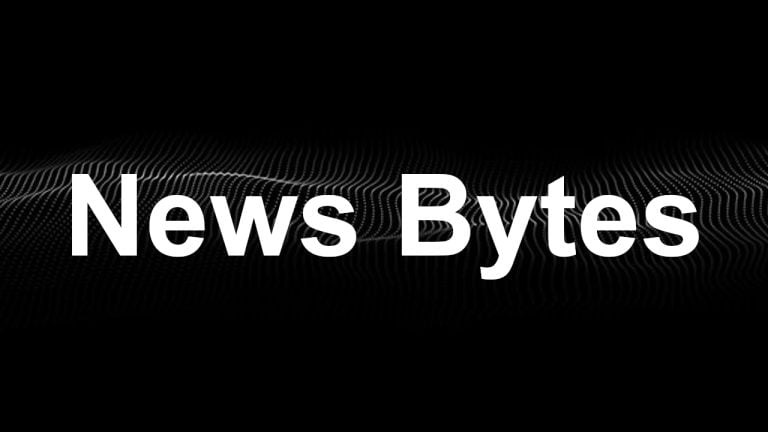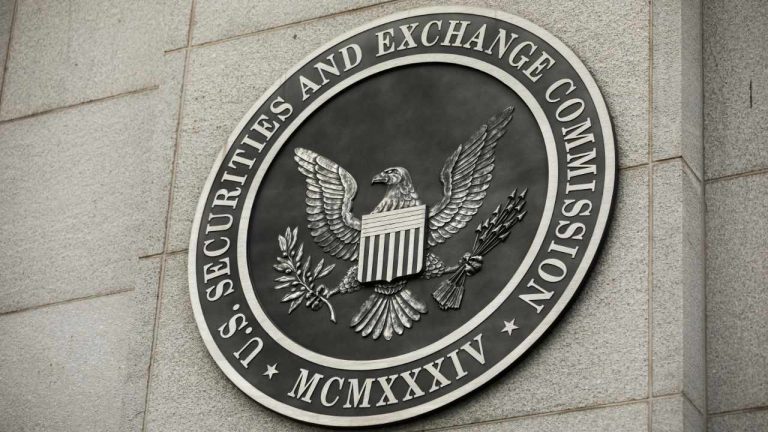 On Tuesday, Bitwise Investments disclosed a collection of Ethereum Name Service (ENS) subnames for its ethereum reserve holding wallets. Bitwise emphasized that this level of transparency is unique to cryptocurrency, allowing the public to easily verify the firm’s net assets. Bitwise Leads in Transparency by Publishing Ethereum ETF Addresses At 7:50 a.m. EDT on Tuesday, […]
On Tuesday, Bitwise Investments disclosed a collection of Ethereum Name Service (ENS) subnames for its ethereum reserve holding wallets. Bitwise emphasized that this level of transparency is unique to cryptocurrency, allowing the public to easily verify the firm’s net assets. Bitwise Leads in Transparency by Publishing Ethereum ETF Addresses At 7:50 a.m. EDT on Tuesday, […] The Bitcoin Office of El Salvador (ONBTC) has launched a site that allows anyone to confirm the treasury holdings of the country, offering a large degree of transparency in its finances. The site, composed as a custom instance of mempool space, a popular block explorer, confirms that the country has been purchasing one bitcoin per […]
The Bitcoin Office of El Salvador (ONBTC) has launched a site that allows anyone to confirm the treasury holdings of the country, offering a large degree of transparency in its finances. The site, composed as a custom instance of mempool space, a popular block explorer, confirms that the country has been purchasing one bitcoin per […] In a significant move towards transparency, El Salvador’s National Bitcoin Office (ONBTC) has announced the launch of its own mempool space. This development allows anyone to view the country’s bitcoin treasury holdings. The initiative is supported by Mempool, which revealed it has provided a custom instance of The Mempool Open Source Project for the ONBTC. […]
In a significant move towards transparency, El Salvador’s National Bitcoin Office (ONBTC) has announced the launch of its own mempool space. This development allows anyone to view the country’s bitcoin treasury holdings. The initiative is supported by Mempool, which revealed it has provided a custom instance of The Mempool Open Source Project for the ONBTC. […] Coinbase’s chief legal officer has publicly urged U.S. Securities and Exchange Commission (SEC) Chair Gary Gensler to stop misleading the market regarding crypto tokens being securities. His request followed Gensler’s repeated assertions that numerous crypto tokens conform to the legal definition of securities, thereby requiring compliance with SEC regulations. Coinbase’s CLO to Gensler: Please Stop […]
Coinbase’s chief legal officer has publicly urged U.S. Securities and Exchange Commission (SEC) Chair Gary Gensler to stop misleading the market regarding crypto tokens being securities. His request followed Gensler’s repeated assertions that numerous crypto tokens conform to the legal definition of securities, thereby requiring compliance with SEC regulations. Coinbase’s CLO to Gensler: Please Stop […]  Consistent disclosure of compliance information demonstrates our longtime commitment to complying with legal and regulatory requests in a way that is consistent with law enforcement and aligns with our ideals: financial freedom, permissionless access to assets, and the acceleration of global crypto adoption -- with a vigilant commitment to regulatory compliance and our clients’ privacy.
Consistent disclosure of compliance information demonstrates our longtime commitment to complying with legal and regulatory requests in a way that is consistent with law enforcement and aligns with our ideals: financial freedom, permissionless access to assets, and the acceleration of global crypto adoption -- with a vigilant commitment to regulatory compliance and our clients’ privacy.
The post Announcing the 2023 Kraken Transparency Report appeared first on Kraken Blog.

Tether and Bitfinex say the decision not to appeal the Freedom of Information Law request by several media outlets was made in the interests of "transparency."
Tether and Bitfinex have jointly agreed to drop initial opposition to a freedom of information (FOIL) request lodged in New York by a number of high-profile news publications.
A statement from the USDT stablecoin issuer and cryptocurrency exchange shared with Cointelegraph notes that it is committed to transparently sharing information following a FOIL request from Coindesk earlier this year.
The companies also indicated that they would not be openly releasing documentation, claiming that the approach is not in line with its business practices:
“It's essential to clarify that transparency does not mean a wholesale release of all our documents.”
Tether and Bitfinex will not appeal against the FOIL request put forward by journalists including Zeke Faux, Shane Shifflett and Ada Hui, while claiming that this is despite “certain behaviors” exhibited by the writers in question.
The company’s claim that Faux’s past reports on Tether and Bitfinex have “extended beyond the boundaries of professional journalism”. They also claim that media outlets including the Wall Street Journal and Bloomberg, whose journalists are participating in the ongoing FOIL request, have been “one-sided and inaccurate”.
Related: Tether’s game plan in El Salvador: Why invest in Volcano Energy?
The statement stresses that both companies are committed to transparency and remain open to engagement with journalists and regulatory authorities, given that they “adhere to ethical reporting standards and respect data privacy boundaries”.
Tether and Bitfinex have also called for “responsible document review” before any public release of information and that their efforts to be transparent do not “equate to unrestricted public disclosure of all documents”.
Cointelegraph has reached out to Tether to ascertain finer details of the FOIL request and the information it pertains to.
Magazine: Exclusive: 2 years after John McAfee’s death, widow Janice is broke and needs answers

Binance Labs, the venture capital arm of Binance Exchange, has invested in ARKM, the native token of the crypto intelligence platform Arkham.
Binance Labs, the venture capital arm and incubator arm of Binance, said on Nov. 15 that it has invested in Arkham (ARKM), the native token of the “deanonymizing” blockchain platform Arkham.
The company said in a blog post on the website that the investment aims to support “on-chain insights at scale across the blockchain ecosystem.”
Arkham’s mission is to deanonymize blockchain transactions and strengthen self-regulation by enabling users to see anyone’s blockchain transactions using Arkham’s intelligence platform, Binance Labs said in the post. Based on the proprietary artificial intelligence (AI) engine known as ULTRA — which “algorithmically matches addresses with real-world entities” — the Arkham platform enables users to track entity relationships and flow funds, the announcement noted.
The VC platform also mentioned that Arkham introduced one of the world’s first on-chain intelligence exchanges, the Arkham Intel Exchange. The tool is a “decentralized intelligence economy” that matches buyers and sellers of blockchain intelligence and allows users to generate intelligence to capture value for their work in exchange for the ARKM token.
Related: UK passes bill to enable authorities to seize Bitcoin used for crime
Binance Labs didn’t disclose the terms of the ARKM deal in the announcement. Amid the news, the ARKM token has jumped more than 30% over the past 24 hours, with its market value reaching an all-time high of $100 million on Nov. 15, according to data from CoinGecko.
At the time of writing, ARKM is trading $0.58, up more than 70% over the past 30 days.

Binance Labs did not immediately respond to Cointelegraph’s request for comment.
Magazine: Beyond crypto: Zero-knowledge proofs show potential from voting to finance

Can blockchain technology actually help to improve transparency within charities?
In 2021, the Australian branch of the Red Cross received $90 million to aid the victims of the bushfires that plagued various regions of New South Wales and Victoria.
However, the organization soon came under fire for its lack of transparency when it revealed that it would only distribute around one-third of the intended funds on immediate assistance and that it could take up to three years to distribute the total amount.
One resident who lost his home to the fires told local media, “They made a lot of promises that they’re going to this, that and other, (but) I’ve received nothing, I have no idea where the money is going.”
This one example highlights a common problem among charities: The processes for distributing charitable giving are often obscured by bureaucracy and prone to mismanagement. Without robust accountability mechanisms, charities risk mismanaging or misusing funds and, at worst, committing outright fraud.
Jack Vinijtrongjit, CEO of AAG — a venture capital firm that heads the AAG Charity DAO — told Cointelegraph, “Statistically, a lot of money goes to waste when it comes to charity. For example, in some cases, only fifty cents out of a dollar ends up at the destination. Very few can achieve efficiency in the 83% range, like Oxfam.”
Blockchain technology can provide tangible benefits for both donors and charities. It offers greater accountability and transparency for contributors, enabling them to follow their donations and see the results of their generosity.
Blockchain technology provides real-time tracking of donations and transactions. This level of transparency helps to build trust and confidence among donors, as they can verify that their funds are being used for the intended purpose.
In addition, it allows charities to provide donors with a detailed breakdown of their contributions, showing how each dollar is allocated to various projects or initiatives. Vinijtrongjit said, “With blockchain, the fund flow can be seen easily, and if the organization expects people to keep donating, they need to make sure as many funds as possible are delivered as intended.”

He said this transparency can reduce fraud and misuse of funds, as “there can be cases where corrupt local officials would take the funds and misuse them.”
Blockchain technology also has the important property of being immutable. A blockchain record or transaction cannot be changed or removed without the agreement of all nodes in the network. Because of its immutability, the charity’s financial records, donation histories and other data are safe from alteration.
Recent: Central banks want to look under crypto’s hood — Is this a positive sign?
This function is especially important for nonprofit organizations since it guarantees that any donations made to their cause will be permanently documented and easily audited by third parties.
Smart contracts, self-executing contracts with the terms of the agreement directly written into code, are another valuable aspect of blockchain technology for charities. These contracts can be used to automate processes such as distributing funds or verifying the completion of specific tasks.
Smart contracts help ensure that funds are used for their designated purposes, as they only release funds when predefined conditions are met. This enhances transparency by eliminating the need for intermediaries and reducing the risk of misusing funds.
One notable example of a charity using blockchain technology is the United Nations World Food Programme’s (WFP) Building Blocks project. WFP deployed blockchain when providing food assistance to Syrian refugees in Jordan.
Each transaction, from food purchases to distribution, was recorded on a blockchain, allowing refugees to access their entitlements via a biometrically verified account.
The World Food Programme also extended its use of blockchain to Yemen, where it employed the technology to provide food assistance to vulnerable populations amid the ongoing Yemeni civil war. By providing digital vouchers through blockchain, the WFP could ensure that aid reached those in need while minimizing the risk of diversion or fraud.
In 2022, Binance launched the Ukraine Emergency Relief Fund, a cryptocurrency-focused crowdfunding platform that allowed people to make contributions to emergency relief efforts aimed at assisting refugees and children in need. This initiative also aims to provide crucial logistical support — including food, fuel and essential supplies — for refugees on the ground. Additionally, Binance donated 16,042 BNB (BNB), equal to $6 million at the time, to the fund.
Donations can be tracked via the official fundraising page, which shows a list of donors, the amount donated by each donor, the total amount raised, and allocations. For example, 2.5 million Binance USD (BUSD) (worth $2.5 million) was allocated to UNICEF and Mercy Corps each, out of the $11.3 million raised so far.

Smaller charities such as GiveDirectly have also adopted blockchain technology. GiveDirectly, which recently provided direct cash transfers to survivors of the earthquake in Morocco and children living in poverty in Flint, Michigan, uses blockchain to record and verify every transaction.
For charities looking to incorporate blockchain technology, there are several best practices to follow. First, it is imperative to establish clear objectives when integrating blockchain into charitable operations.
These objectives should be well-defined, including enhancing transparency, streamlining administrative processes or optimizing aid distribution.
Selecting the most suitable blockchain platform is of paramount importance. Choices like Ethereum or Hyperledger should be made judiciously, considering factors such as scalability, security and the unique requirements of the charitable organization.
Marina Zibareva, a spokesperson for Binance Charity — a nonprofit organization that uses blockchain technology for crypto donations — told Cointelegraph, “Charities need to adhere to some critical best practices when adopting blockchain technology to improve transparency in charitable operations. Among these is gaining a comprehensive understanding of how blockchain and cryptocurrency function. Acquiring this foundational knowledge is a pivotal first step in the integration process.”
Understanding how blockchain technology works is important for charities since blockchain technology isn’t a one-size-fits-all solution. There are different implementations and platforms, each with unique features. For instance, layer-2 networks like Polygon have faster speeds and lower transaction costs. To select the most suitable solution, charities must understand these differences and how they align with their specific goals and donor preferences.
Jerry Lopez, founder and CEO of Philcoin — a blockchain-based philanthropy platform — told Cointelegraph:
“It is important for the organization to conduct an internal analysis to assess capabilities and resources. Is the organization ready for innovation and/or adaptation? Are the main stakeholders ready for the shift?”
“This sounds like an obvious point, but it’s essential. Charitable organizations can be slower to accept change. Understanding what’s necessary to make the leap to blockchain solutions will require additional resources and investments to ensure credible, trusted and functioning solutions are implemented,” he said.
Lopez also stressed the importance of the organization knowing if it’s “fully committed to seeing through the transition,” which can take time, research, understanding and a dedicated team to help manage and oversee the development. “Very often, organizations will learn through trial and error,” Lopez said.
Good security practices and maintaining data accuracy are fundamental principles to building and maintaining trust with both donors and beneficiaries. This involves the continuous upkeep of precise, up-to-date records on the blockchain. Regular audits and verification of transactions are essential measures to prevent errors or fraudulent activities.
Zibareva said, “Charities must prioritize security as they venture into the blockchain realm. Adopting cutting-edge security measures and technologies is vital to safeguard the system’s integrity. Putting safety at the forefront ensures the protection of the organization and its donors from potential fraud and bolsters the overall trust in the transparency mechanisms in place.”
Adhering to data protection regulations and preserving the privacy of sensitive beneficiary information are nonnegotiable elements. These data security considerations should be balanced with the necessity of allowing accessibility for verification purposes.
Planning for scalability is another critical aspect, particularly when anticipating a growing volume of transactions and beneficiaries over time. The long-term sustainability of the blockchain infrastructure should be a central concern, ensuring that it can adapt to the evolving needs of the charitable organization.
Zibareva added that charities “should evaluate their technical readiness, considering their capacity to manage cryptocurrency wallets and other blockchain-related infrastructures.”
“By comparing their operational needs with blockchain’s capabilities and leveraging expert insights, charitable organizations can decide whether blockchain integration aligns with their transparency goals.”
It’s also necessary for charities to assess whether their community (donors, partners, etc.) are ready to accept using blockchain platforms for charitable purposes.
Lopez said, “Is the community ready to accept blockchain? How will blockchain solutions impact the supplier chain, for example? Is the community able to accept, receive or interact with the new solutions, or will this require additional infrastructure, education, training and development to ensure the full charitable cycle is onboarded?”
The adoption of blockchain technology in the charitable sector is a complex process that goes beyond just the technology itself. It involves organizational preparedness, supplier relationships and the broader community’s ability to adapt. Transparency in charities is a noble goal, but it requires a comprehensive and well-planned approach to ensure that the full potential of blockchain is realized without leaving any stakeholders behind.
While blockchain technology can indeed help track the flow of funds, it can be combined with additional organizational processes to ensure that charitable donations are used effectively.
Vinijtrongjit said, “I don’t believe blockchain alone can help fix these issues since tracking the use of funds is much more complex. For example, local charities at the destination may be forced to use a vendor overcharging them as part of the corruption scheme. An independent audit must still be carried out, but at least blockchain can be used to ensure the fund gets to the destination.”
Magazine: Ethereum restaking: Blockchain innovation or dangerous house of cards?
Independent audits are another important aspect of ensuring transparency, as they can thoroughly examine a charity’s financial records, operations and compliance with regulations. They provide an objective evaluation of the organization’s financial health and adherence to best practices.
Vinijtrongjit also believes that organizations must fully adopt blockchain in every part of their operations, as charities providing comprehensive, accessible and regular reports that detail their activities and financial information can be beneficial.
This includes information such as the allocation of funds and the amount of money raised, which can be gathered from the blockchain and added to these reports. Vinijtrongjit said:
“This will be like providing insights to the potential donors so they can decide not just what cause to contribute to but also based on how well the organization can carry out the mission.”

Google and other major platforms on the web will need to update their service policies in order to comply with EU standards in its Digital Services Act by Aug. 28.
Google plans to update some of its service policies in order to comply with the European Digital Services Act (DSA) according to a blog post on Aug. 24.
The BigTech giant says it has made “significant investments” in various areas in order to comply with the European Union’s DSA’s specific requirements.
It plans to expand its Ads Transparency Center, expand reachers’ access to data, expand its transparency research, add more visibility for content moderation, create a new Transparency Center for its policies and conduct more in-depth risk analysis.
The post also expressed that Google has voiced concerns about the potential “unintended consequences of some of these measures:
“... such as the risk of making it easier for bad actors to abuse our services and spread harmful misinformation by providing too much information about our enforcement approach.”
The intention of the EU’s DSA was to consolidate content regulations across the region and form more specific processes for content moderation online. It also categorized 17 online platforms as very large online platforms (VLOPs) and 2 as very large online search engines (VLOSEs).
General requirements for sites in these categories include prevention and removal of illegal posts and a way to report them, targeted advertising being banned based on a user’s sexual orientation, religion, ethnicity or political beliefs, targeted ads to children being restricted and data sharing with researchers and authorities, among others.
Related: Google upgrades search engine with AI-powered enhancements
The VLOPs included: Alibaba AliExpress, Amazon Store, Apple AppStore, Booking.com Facebook, Google Play, Google Maps, Google Shopping, Instagram, LinkedIn, Pinterest, Snapchat, TikTok, Twitter, YouTube and Wikipedia and Zalando.
The two VLOSEs it categorized were Bing Search and Google Search.
All the platforms mentioned in these categories had until Aug. 28 to meet the obligations of the DSA. Google called its updates “compliance at scale.”
TikTok, also mentioned by the DSA as a VLOP, also released a statement on Aug. 4 saying it also prepared for the measures. It added a new way to report illegal content, gave more information on its content moderation methods, made its recommendation system more transparent and updated its ad policy for teens.
Users took to Reddit to discuss the upcoming implementation of the DSA. Some praised the regulations for being something that is “needed” to keep BigTech in line, while others said these policies limit free speech.

In the middle ground, one user argued that it’s “too early to make a fair judgment.”
Despite these updates pointing towards a more safe internet, on Aug. 21 Google took to its blog to respond to accusations of ads tracking data of children, which were published in a lengthy report.
Magazine: Should we ban ransomware payments? It’s an attractive but dangerous idea

The Alliance of Motion Picture and Television Producers released a memo of its offer to striking writers and actors, with proposed guidelines for AI usage and data transparency.
The Alliance of Motion Picture and Television Producers (AMPTP) released details of its proposal for striking actors and writers on Aug.22, which included standards for the entertainment industry surrounding the usage of artificial intelligence (AI) and data transparency.
Under the proposed conditions, generative AI cannot be considered a writer. Therefore, any AI-created material cannot be regarded as literary or intellectually protected.
The proposal also ensures that material produced by generative AI cannot affect credit, rights and compensation. While companies can use generative AI-created scripts as source material, any writer who reworks the script will be compensated as if they are the original author.
Additionally, any studio or production company seeking a writer’s help in the development of an AI-produced script must disclose the origin of the script.
Initially, the proposal was released eleven days ago, on Aug. 11, but without significant information about important issues raised by the striking parties.
Related: US judge rules in favor of human ingenuity, denies copyright for AI art
Along with updates to AI-related matters, the proposal touches on data transparency issues. Before the proposal, writers rarely had access to metrics produced by their work.
The updated offer would allow viewership data to be made available to writers and presented in quarterly confidential reports. However, for the time being, it would only include subscription video on demand (SVOD) metrics — not advertising or transactional videos.
The AMPTP proposal suggested that:
“This increased transparency will enable the WGA to develop proposals to restructure the current SVOD residual regime in the future.”
The latest developments came on the 114th day of the strike and were the latest iterations of AI incorporation from Hollywood studios.
On May 3, they rejected requests from the Writers Guild of America to ban AI completely from the writing room.
There were also proposals that suggested background performers should undergo scanning, receive compensation for the initial day of work and then grant companies ownership of the scan, image and likeness. This sparked a wave of backlash from entertainers in the industry.
Nonetheless, the signals of big production companies looking to incorporate AI are apparent. On July 27, Netflix posted AI job positions with exuberant salaries reaching up to $900,000.
Magazine: Experts want to give AI human ‘souls’ so they don’t kill us all